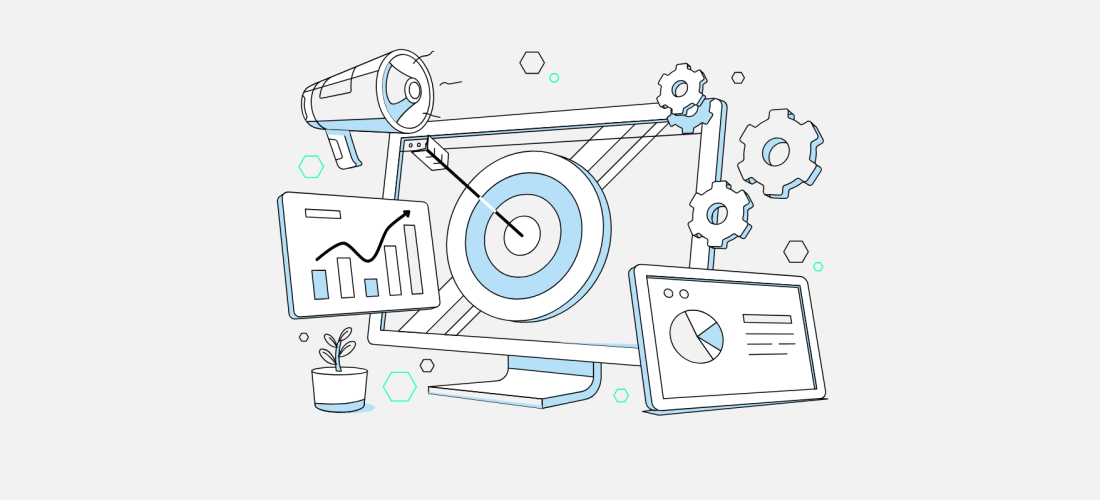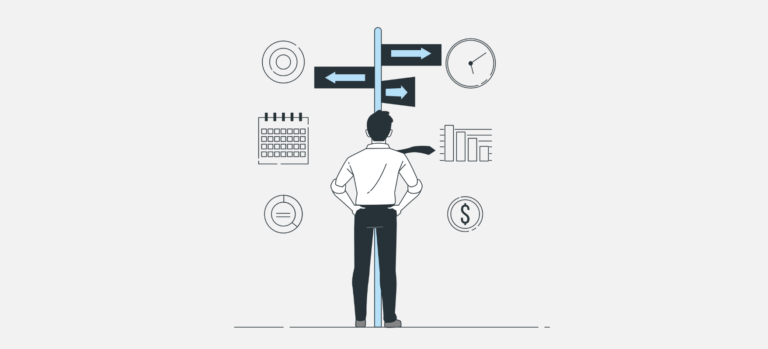Definition of an ETF
An ETF is a exchange-listed index fund. It replicates the performance of an index (e.g. the SMI, S&P 500 or MSCI World) by purchasing all or a representative selection of its constituent securities.
Unlike a traditional mutual fund, an ETF is:
- Continuously quoted on the stock market, like a share,
- Transparent, because its membership is public,
- Generally inexpensive, thanks to passive management.
Why invest in ETFs?
ETFs offer several major advantages for investors, which explain the growing interest in these investment vehicles.
Immediate diversification
One of the key principles of investment is the diversification spreading its capital over different regions, sectors and companies to reduce the overall risk. With an ETF, you can achieve this from the very first franc invested.
For example, an ETF on the MSCI World provides access to over 1'500 companies in 23 developed countries. With a single position, you become a co-investor in Nestlé, Apple, Toyota or Microsoft.
This allows you to:
- Smooth performance,
- Absorb sectoral or geographic shocks,
- Participate in the financial markets, even with modest capital.
Low management fees
The passive management of ETFs involves minimal human intervention: the goal is to replicate an index, not to actively select securities. This results in very low management fees, often between 0.05% and 0.30% per year, compared to 1% to 2% for traditional active funds.
Over the long term, this difference in costs can represent a difference of several tens of thousands of francs on pension or investment capital. In Switzerland, in a pillar 3a or a securities account, the reduction in fees significantly improves net performance after costs.
Daily liquidity
Unlike unlisted funds, ETFs are bought and sold on the stock exchange in real time during market hours. This provides significant flexibility to adjust your strategy based on market events or liquidity needs.
ETFs vs. investment funds: what are the differences?
ETFs (Exchange Traded Funds) and traditional mutual funds are two types of collective investment vehicles. Both allow you to invest in a broad range of securities (stocks, bonds, etc.), but they differ in management style, structure, costs, and accessibility.
Passive vs. active management
The fundamental difference lies in the way they are managed: ETFs are generally managed by passively. They are content to reply a benchmark index (such as the SMI, S&P 500 or MSCI World), without trying to outperform it. The aim is to match the performance of the index as closely as possible.
Conventional investment funds, on the other hand, are often managed by actively. A manager selects securities according to his market expectations in order to outperform a benchmark index. This implies a more complex, discretionary strategy.
How it works
ETFs are traded on the stock exchange, just like shares. They can be bought and sold at any time during the trading day, at market prices. This offers great flexibility and price transparency.
Traditional mutual funds, on the other hand, are not listed on the stock exchange. They operate based on a net asset value (NAV) calculated once per day. Subscriptions or redemptions are executed at the price determined at the end of the day, without the possibility of real-time trading.
Difference in costs
ETFs have significantly lower management fees. Passive management requires fewer human resources and less research. Annual fees typically range between 0.05% and 0.30%.
In contrast, active funds have higher fees, typically between 1% and 2%, sometimes more. These fees cover the manager’s work, research, and trading activities—but they do not guarantee better performance. In practice, it is actually quite rare for an actively managed fund to outperform an ETF after all fees are deducted.
ETFs vs. index funds
Unlike ETFs, traditional index funds are not listed on the stock exchange. Purchases and sales occur at the closing price (net asset value), once per day. They are often accessible through banks or financial advisors and are favored in systematic savings plans or structured pension solutions.
ETFs generally have very low management fees (0.05% to 0.30% per year) due to their automated model. However, additional costs include brokerage fees (per transaction) and the stamp duty.
Classic index funds also have low fees, sometimes slightly higher (0.20 % to 0.50 % depending on the case), but do not generate transaction costs on purchase or sale (excluding any fees charged by the intermediary). They are therefore often more advantageous in periodic savings plans where you invest a fixed amount each month.
History of ETFs
The first modern ETF was launched in 1990 in Canada with the Toronto Index Participation Fund, based on the TSE 35 index. However, ETFs truly gained prominence in the United States. In 1993, State Street introduced the SPDR S&P 500 ETF Trust (ticker: SPY), which still exists today and remains one of the largest ETFs in the world.
Over the years, many new providers (iShares, Vanguard, Lyxor, UBS...) entered the market. The range expanded rapidly: first to international equities, then to bonds, commodities, sector indices, etc.
With the arrival of ETFs listed in Europe (including Switzerland) and the emergence of products domiciled in Luxembourg or Ireland, the market has truly become global. Following the 2008 financial crisis and amid volatility and mistrust of complex products, ETFs have gained popularity due to their transparency and simplicity.
Taxation of ETFs
ETFs are subject to wealth tax, income tax and withholding tax in Switzerland.
Wealth tax
All ETFs held on December 31 must be declared at their tax value in the cantonal wealth tax return. The list of courses is available on the Swiss Federal Tax Administration (FTA) website.
Income tax
If your ETF distributes income (dividends or coupons), these amounts are taxable as income at the time of payment.
Swiss-domiciled ETFs that invest in Swiss stocks are also subject to a 35% withholding tax on dividends. Only 65% is paid out to investors, but this amount can be fully reclaimed through the tax declaration, provided the security is properly declared. This is not the case for foreign ETFs, unless a double taxation agreement allows for partial recovery. Therefore, Swiss ETFs are fiscally more advantageous for Swiss securities.
Stamp duty
In Switzerland, the buying and selling of ETFs are subject to the stamp duty on securities trading, a tax levied by the federal government on securities transactions. The rate depends on the fund’s domicile: it is 0.075% for ETFs domiciled in Switzerland and 0.15% for those domiciled abroad.
This cost, which is levied on each transaction, becomes significant for active investors or investors with large volumes. For a long-term investment strategy with few round-trips, its impact remains limited.
Which ETF should I choose?
Choosing an ETF means selecting the instrument that best aligns with your wealth strategy.
1. Define the investment objective
The first step is to define the objective pursued: accumulate a capital to enhance the value of a savings in the medium term, generate revenues or even diversify an existing portfolio.
For a long-term horizon and a global growth strategy, broad index ETFs such as the MSCI World, FTSE All-World, or ACWI are recommended. They offer optimal geographic and sector diversification, with very competitive fees (often below 0.20%).
2. Understanding the structure of an ETF
The structure of an ETF is based on three key elements: its replication method (physical or synthetic), its distribution policy (distributing or accumulating), and its trading currency, which may be hedged against currency risk. For Swiss investors, choosing a physical, accumulating ETF denominated in CHF or currency-hedged often offers better clarity and risk management, depending on their objectives.
3. Tax considerations
In Switzerland, taxation plays an important role. Dividends received are taxed as income, even for capitalizing ETFs. In addition, ETFs domiciled in United States are subject to a non-recoverable withholding tax on dividends, which penalizes the net yield.
Best Swiss ETFs
We have selected the best Swiss ETFs according to several key criteria: low management fees (TER), physical replication for greater transparency, and sufficient trading volume to guarantee liquidity.
Annualized performance
ETF
ISIN
Total expenses (TER)
3 years
5 years
10 years
iShares Swiss Dividend ETF (CH)
CH0237935637
0.15 %
7.62%
13 %
8.62 %
Xtrackers Switzerland UCITS ETF (Acc)
0.30 %





